Up Next

Spa was always going to be a challenging circuit for underpowered Ferrari, although it was still a surprise to see the fastest of its cars down in 15th and 1.696s off the pace at the end of Friday.
That puts it right in the thick of the battle just to get out of Q1. Friday times are notoriously misleading, and it’s unlikely Ferrari’s situation really is that bad.
But there’s no denying this is going to be a particularly tough weekend for the team at a track where it won last year.
The nature of the Spa circuit means it’s always interesting to see how different teams tackle the set-up compromises of this track and the way Ferrari has approached this shows how its attempts to compensate for a lack of power are holding it back.
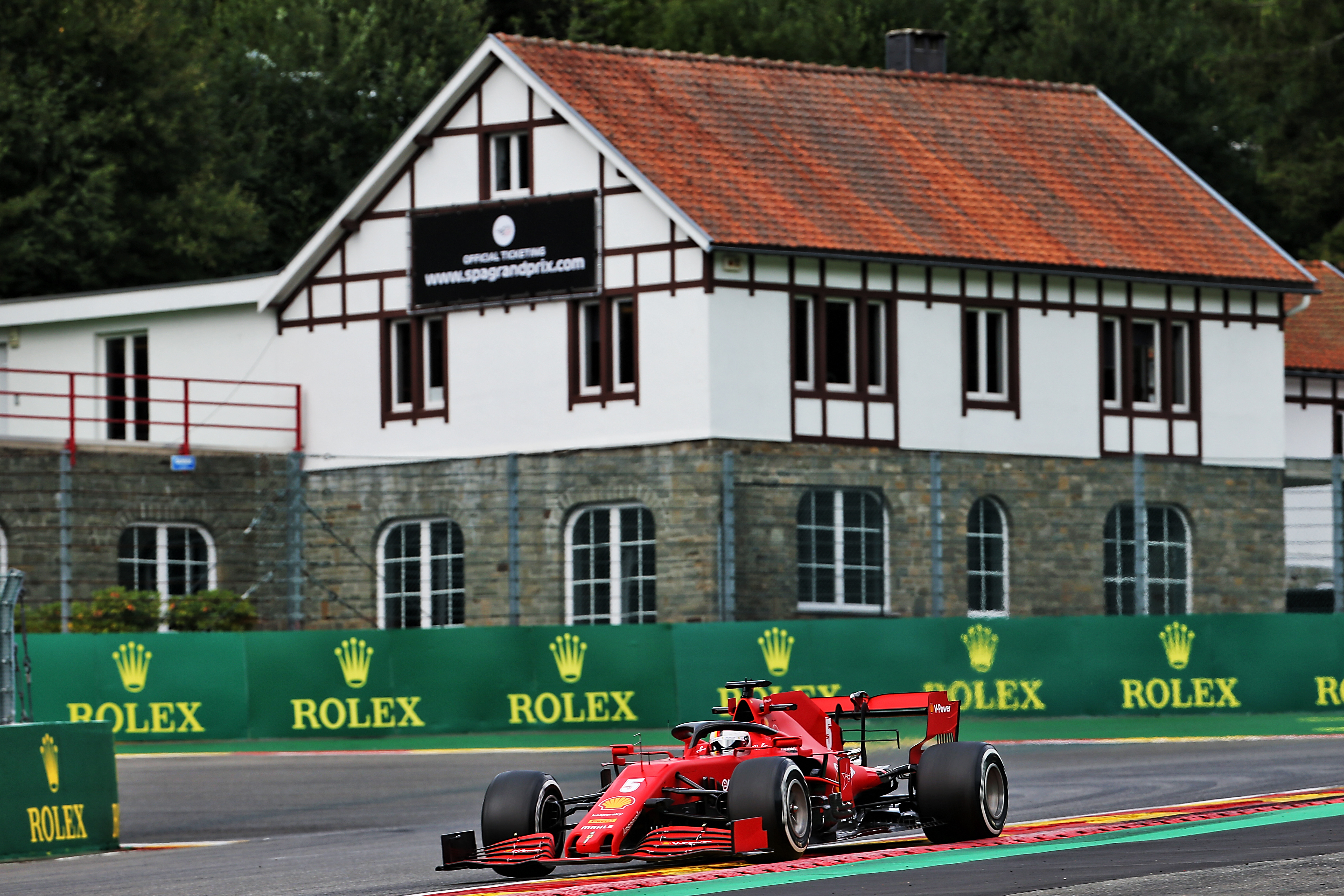
It’s a circuit of three sectors, but really two halves. The first sector has the La Source hairpin, the last sector has the Bus Stop chicane but, in reality, it’s all about top speed and braking stability for those two slow corners. And in the race, any overtaking will be done on the Kemmel Straight or out of Blanchimont into the chicane.
The middle part of the lap is more about corners and looking after your tyres. If you can run a bit more downforce, start at the front and have a clean getaway to break the dreaded DRS, being a bit slower on the straight won’t hurt much and you’ll have an advantage on tyre management.
However, it’s never just about that first lap. Running more downforce means you need to make sure your strategy doesn’t leave you vulnerable when you come out of the pits. Get caught behind a car that is fast on the straights but slower through sector two and you can lose seconds very quickly.
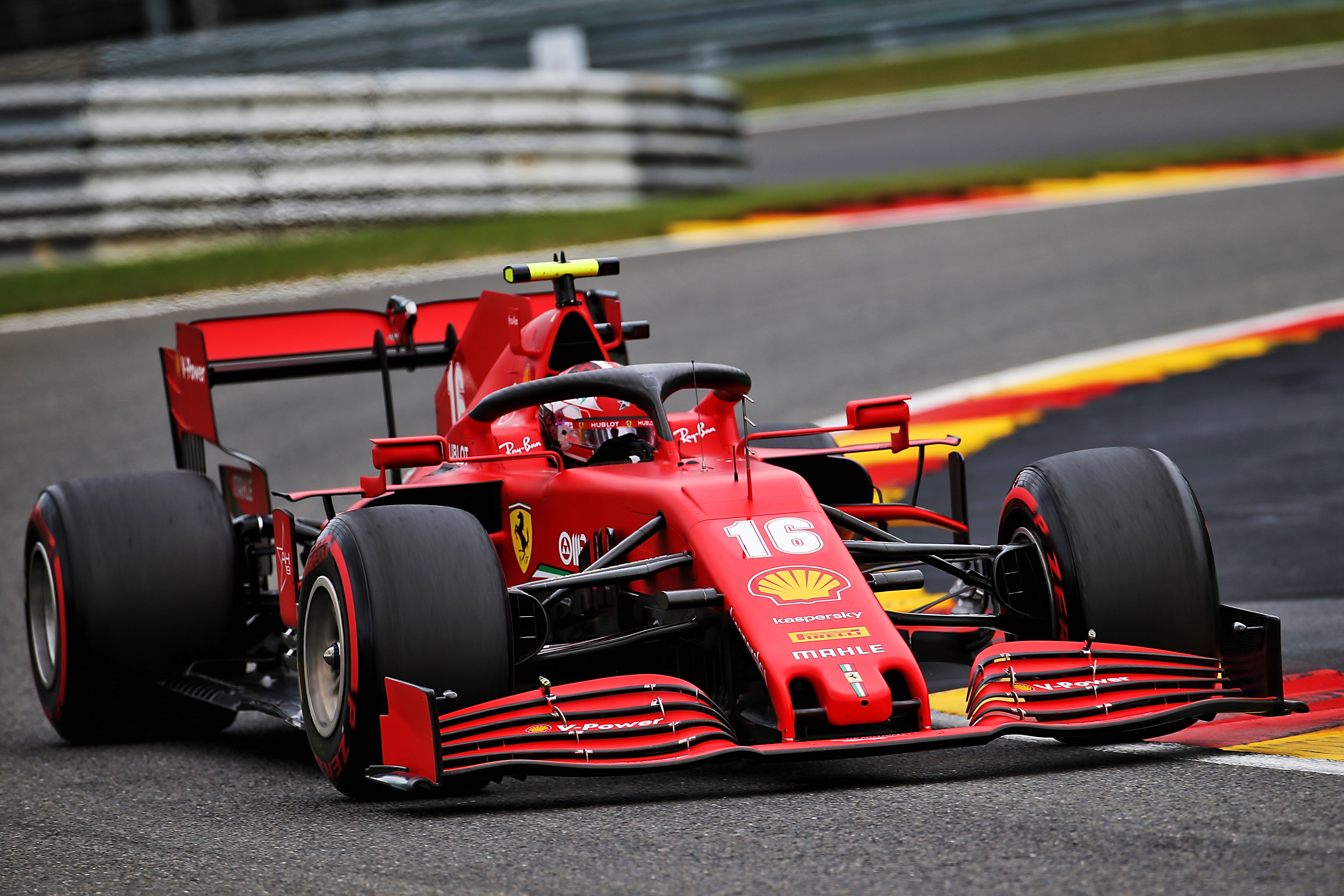
Ferrari isn’t fortunate enough to be at the front and will instead be in the pack. On Friday practice times, it wasn’t even the fastest Ferrari-engined car.
Before we break down the pace of Ferrari and the other cars across those sectors, it’s worth having a look at the new parts it has brought to Spa with a new rear wing and a lower-downforce tweak to the front wing. In our images below, the bottom picture shows the revised specification for Spa.
When you reduce the rear downforce to reduce drag and gain top speed, something needs to be done at the front to keep the car balanced.
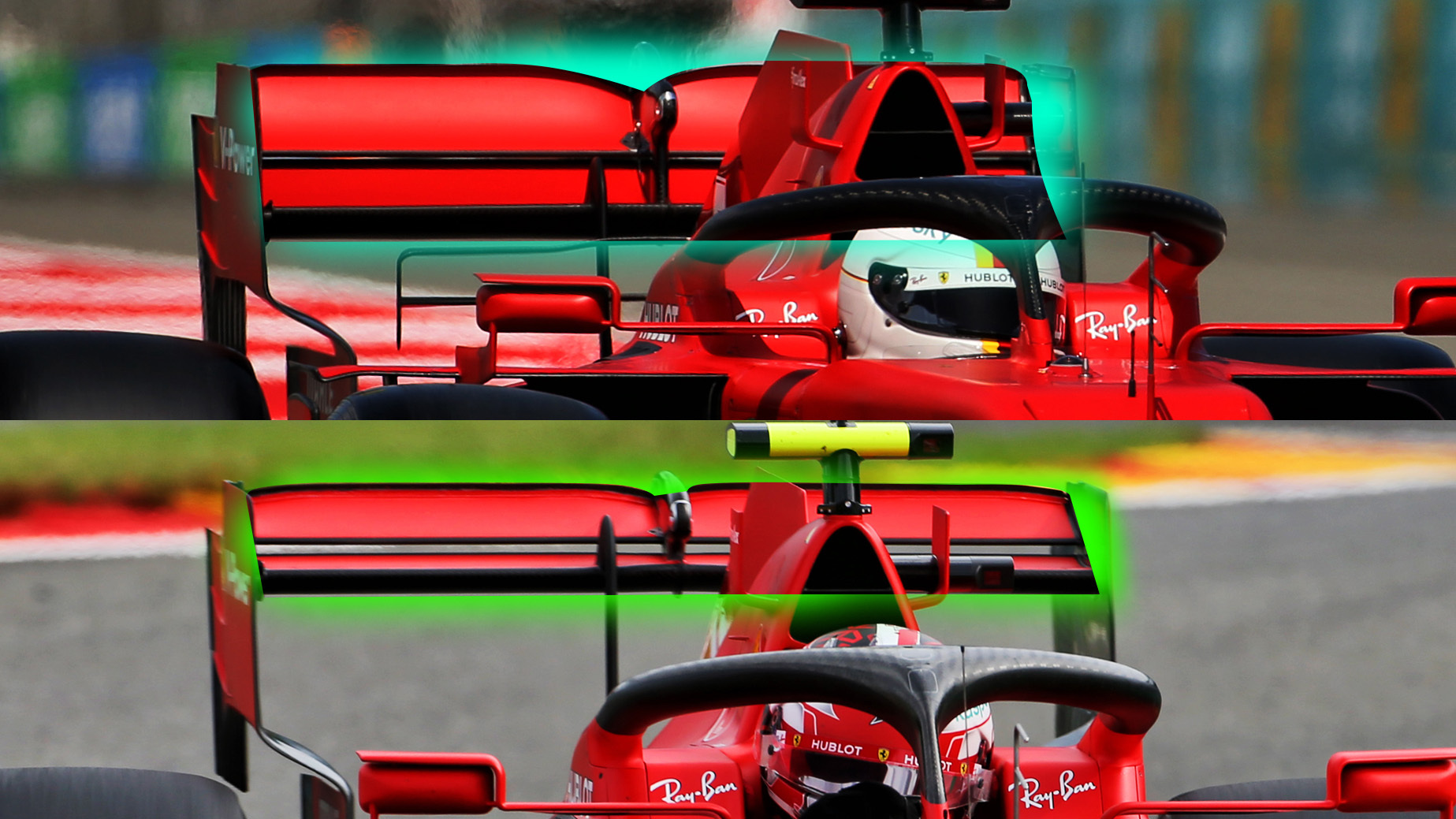
The rear wing is simple as there are no downstream negatives, it simply creates less drag. The front wing is not quite so straightforward.
The front wing assembly and how the flaps are configured means that the airflow coming off the trailing edge of the rear flap has a major effect further downstream.
I am a bit confused with how Ferrari has gone about getting this balance. It has altered the trailing edge profile to achieve the required balance, but in doing that it will probably have lost some overall downforce from the underfloor.
This is because the front wing is not pulling as much airflow through between the front wheels and under the chassis, so the bargeboards become less effective, as does the underfloor.
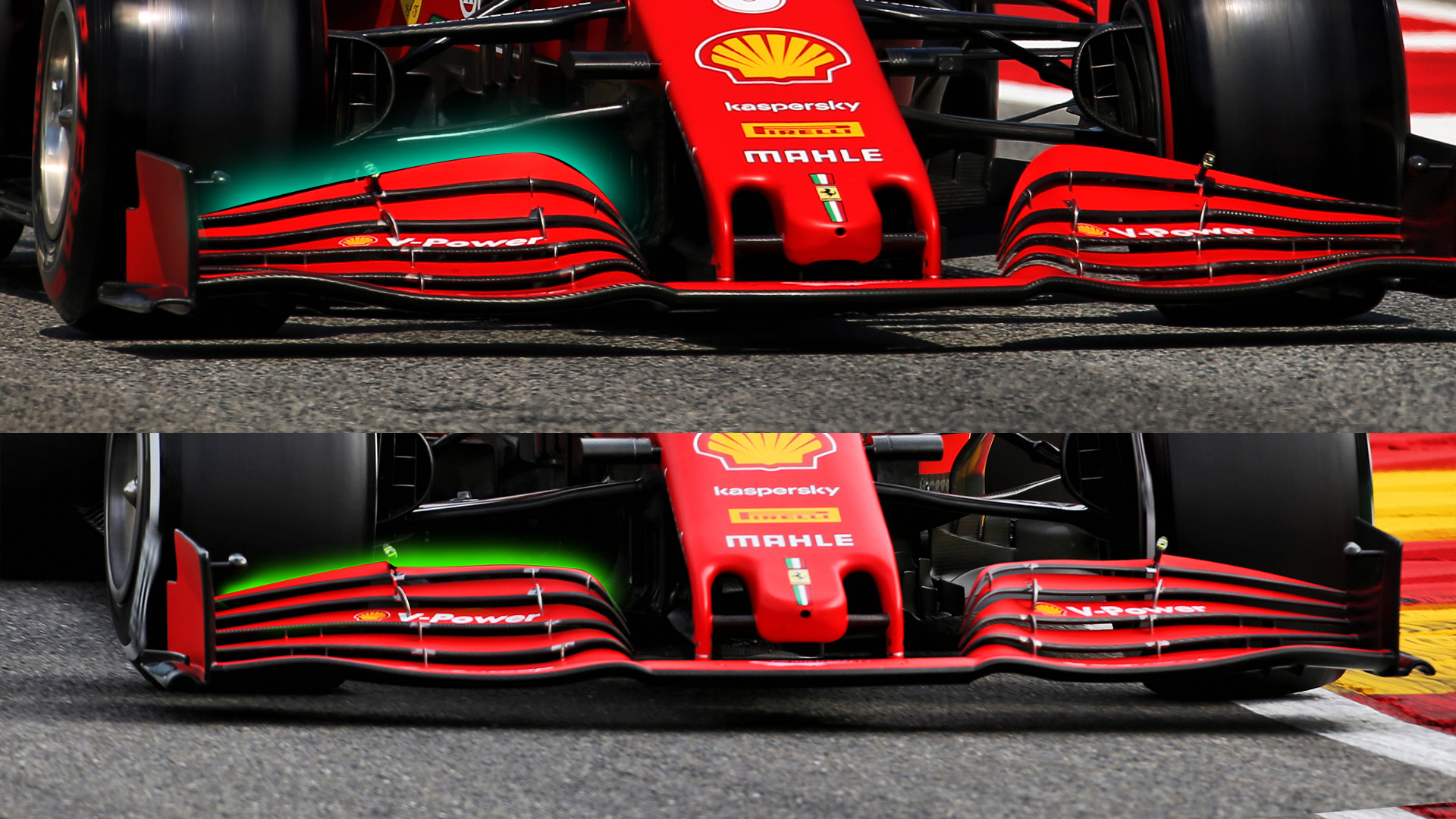
We will see what configuration Ferrari chooses to run in today after crunching the numbers overnight. But it’s never an easy trade-off at Spa, however you go about it.
I remember listening into a conversation on the grid at Spa between Michael Schumacher and his race engineer at Ferrari. He wanted to reduce the rear wing angle and his engineer was telling him that would mean he would be slower through sector two.
Schumacher’s reply was to let him look after that section, but he needed the speed on the straight to fight others off or pass anyone. That’s the challenge of Spa.
So why has Ferrari ended up as an also-ran on pace? It’s clear that to have any chance either of holding position or passing anyone in the race, Ferrari has to compromise sector two more than anyone else. It was a massive 1.8s off the pace in a 45s middle sector. That’s a lifetime in any category, let alone F1.
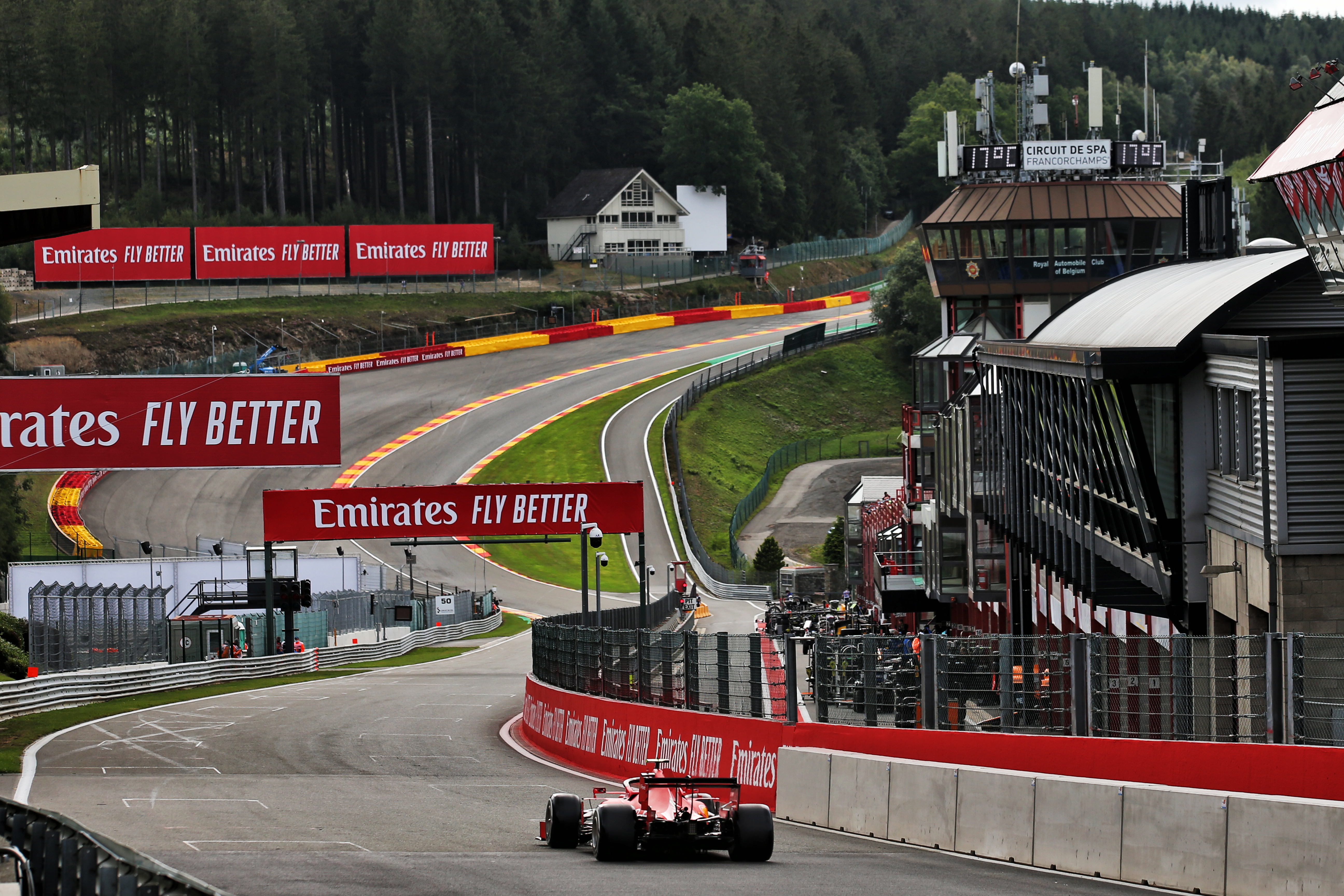
Ferrari is a little faster through Eau Rouge and at the end of the Kemmel Straight than Mercedes, but won’t have another car in sight by the time everyone has got through sector two after the first couple of laps.
We can compare Ferrari’s pace to the rest both in terms of the sector times and the speed traps and understand how each team has approached this trade-off.
This table shows the teams in order of fastest lap, with the best individual sector times set by each team’s faster driver in practice two.
They are ordered based on where they are in the lap, with the speed trap at the end of sector one at the start of the Kemmel Straight and the main trap at the end of it.

RED BULL
In general, Red Bull has got what is available out of the car. Its speeds are competitive with Mercedes and the sector 1 and 3 times are slightly better. But Red Bull loses over half-a-second in sector 2.
For Red Bull to win, it needs to qualify ahead of Mercedes or get ahead on the first lap. And we all know that won’t be easy.
RENAULT
Renault is a very similar story to Red Bull, but to achieve those speeds its rear wing is more like an F3 version. Eight-tenths slower than Mercedes and three-tenths slower than Red Bull through sector two doesn’t bode well for tyre life.
MERCEDES
The Mercedes performance backs up what I was saying earlier. The team knows how to win from pole and is half a second faster than the Red Bull in sector 2.
Mercedes loses a couple of tenths in the first sector and three tenths in the third sector but knows when it goes into party mode that deficit will disappear. However, if for any reason Mercedes doesn’t get on pole it could be a different story.
RACING POINT
I think a touch more downforce wouldn’t go amiss. The speed at the end of sector 2 is down a bit – that’s between Turns 14 and 15 and is affected by corner speed.
It also gains 20km/h between the speed trap at the exit of Eau Rouge and the end of the Kemmel straight. That’s not the biggest gain – AlphaTauri and Alfa Romeo gain a tad more – but of the teams that could actually be fighting for a podium position Racing Point picks up the most.
That’s for overtaking, but might just use the tyres up too quickly. But as we know, Sergio Perez is one of the best at looking after those.
McLAREN
Between Racing Point and McLaren, it’s nip and tuck. McLaren should be very happy with this as it doesn’t have the engine that Racing Point has. It will all depend on who qualifies in front of who and who can best look after the tyres. I think that might just be Racing Point.
ALPHATAURI
This is where the gaps start to get a bit bigger. Pierre Gasly has been doing a good job this year and AlphaTauri knows that it is race day that is pay day so spends most of its efforts focusing on the race.
Both drivers know how to hang on for that one lap on new tyres and if they can head up Q2 or just nip into Q3 they will be very happy. However, it’s going to be very difficult to do that at Spa.
ALFA ROMEO
You can’t keep an old dog down and Kimi Raikkonen certainly loves Spa. He has had some mighty drives here, but this year is going to be a bit different.
With the tools he has, he just has to keep his head down and hope that a miracle happens that gets him into the points.
FERRARI
Ferrari’s trimmed out rear wing shows just how down on power it really is. To add to that, I’m not seeing anything worth writing home about as far as the chassis is concerned.
Ferrari locks front wheels very easily, which is a sign of a lack of feeling in the chassis. It’s a bit like when Daniel Ricciardo went to Renault, he was the once great late braker but that asset was suddenly taken away from him. Some of it has since come back for Ricciardo but I’m not seeing any return to form for Ferrari.
WILLIAMS & HAAS
There’s not much to say about them as the times speak for themselves. Both need a miracle to get a result.



